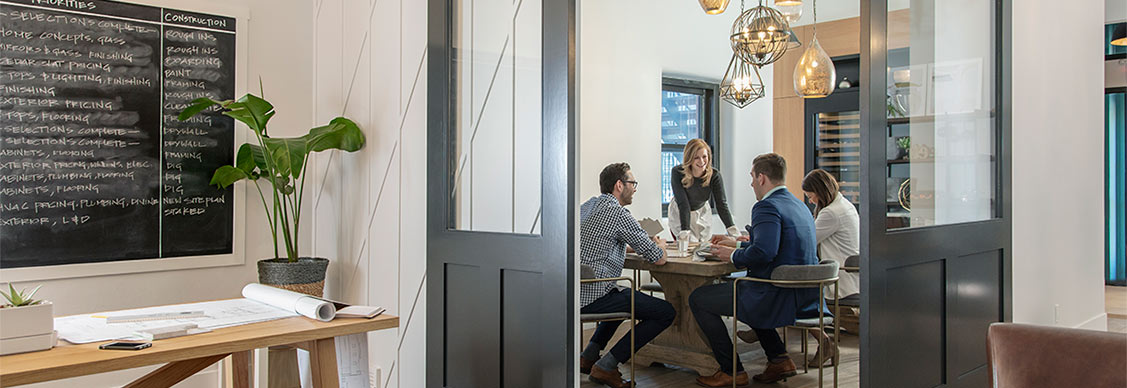What happened to the hub-and-spoke office model?
While new spokes have emerged, investment is moving back to the hub.
Think back to the beginnings of the global pandemic. Then, word around the global office scene was that the days of single downtown headquarters were out, and modern companies should move toward a hub-and-spoke model to accommodate employees who had moved far from the centralized office.
Two years later, most business leaders are still in the “wait and see” phase of the future of work. But one thing is for sure: New ways of working have put the emphasis back on the central office.
The hub-and-spoke model imagined the headquarters as a hub, with satellite offices spinning off from there (the spokes).
But working patterns have evolved differently than some expected. For instance, asynchronous work has gained momentum. And employees are content with working at home or going to flexible workspaces to supplement their days in the corporate office, according to a recent JLL survey. This has companies asking what role their central offices will play, and how to make it worth the commute.
The answer, says JLL Research and Strategy Director Christian Beaudoin, appears to have a lot to do with collaboration.
“Clients are asking how to get employees in the office, and part of the answer is through creating a can’t miss experience, whether that’s through requiring a critical mass of people, investing in technology, or creating connectivity that creates a FOMO (fear of missing out) experience,” he continues, adding that dynamic collaboration spaces will be a must-have.
The hub before the spoke
As experts forecast that 2023 will be the “year of implementation,” Beaudoin expects to see large investments in the company’s main physical offices.
Insights from JLL’s latest survey of over 1,000 real estate decision-makers across the globe suggest that the period from late 2022 to 2025 will represent a crucial window of opportunity for organizations to redefine their workplace strategies and create flexible, tech-enabled, future-proof real estate portfolios.
“The reason to come to the office has evolved,” Beaudoin says. “Offices need to be central places to collaborate and connect with co-workers, which is what employees are looking for most right now.”
For example, Google is investing in its Chicago office by creating “campfire” conference rooms to dramatically improve the meeting experience for both the in-office and remote workers.
Designed to feel like one is sitting around a campfire – where a rotating camera is in the center – large monitors and physical seats round the space to create a more personal experience.
“In my opinion, much of the Great Resignation can be attributed to people seeking meaning from their work,” Beaudoin says. “That feeling of purpose can be difficult to find when you’re staring at a screen, working from home every day.”
Is the satellite office still relevant?
Satellite offices still work, especially in places like Europe where the idea of the 15-minute city is taking off. But Beaudoin says the U.S. has struggled to adapt, largely because of costs, and difficulties with making sure offices are not competing against each other – for example, one has better technology than the other.
“Companies headquartered in large metro areas like New York City could benefit from satellite offices because they tend to have clusters of employees that live in Connecticut, Upstate, or New Jersey,” Beaudoin says. “The same can be said for the Bay Area.”
In some cases, he adds that smaller metros like Dallas-Fort Worth could also succeed with satellite offices in the suburbs like Plano or Frisco.
“The war for talent also plays into the conversation as executives are now asking how to access the best labor pool,” Beaudoin says. “Labor analytics can help determine the best location within a metro area, and if a central hub or smaller regional offices make the most sense.”
However, a few challenges to pay attention to when creating satellite offices include cost efficiency and ensuring that the offices are not competing against each other – for example, one has better technology than the other.
“An equal, engaging experience should be the goal everywhere,” Beaudoin says.
But meantime, the focus is firmly on making sure the hub is delivering experiences that can’t be created if people aren’t in the same space.
“Remote working is a lot like online dating. You can do most of it swiping, but eventually, you want to meet in person,” Beaudoin says.
